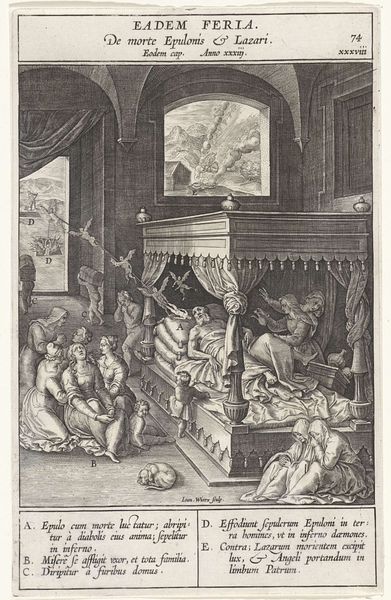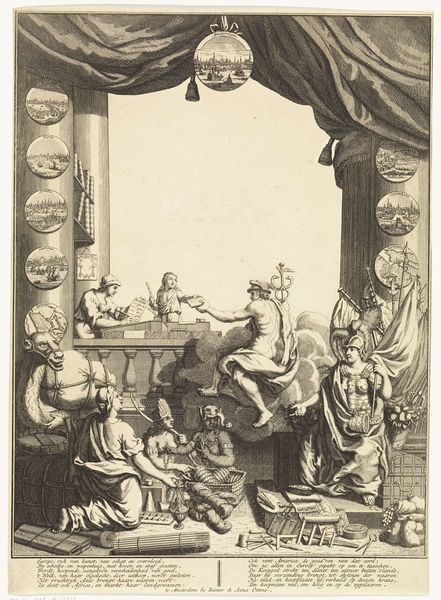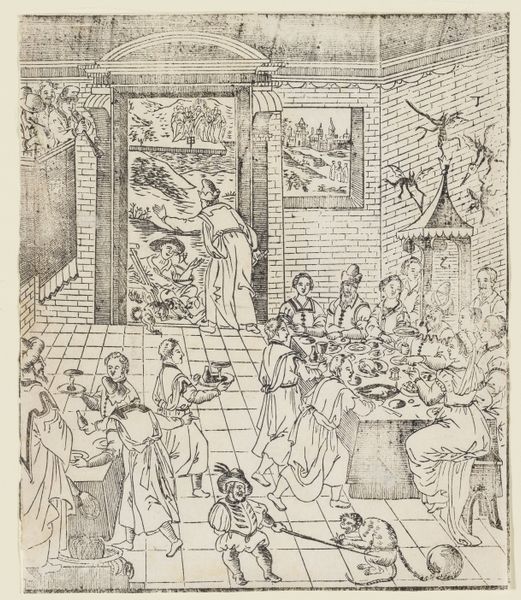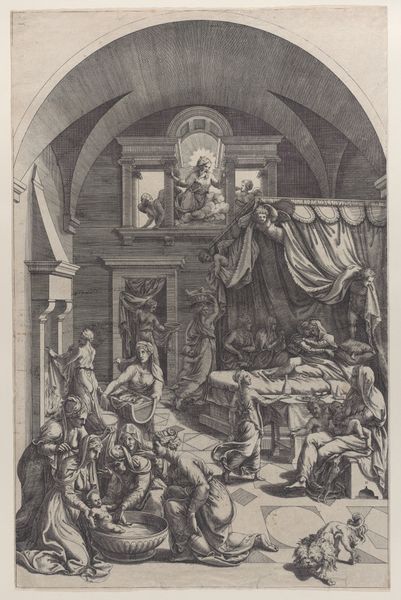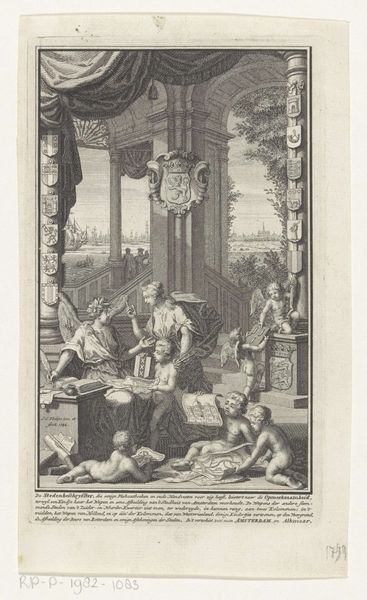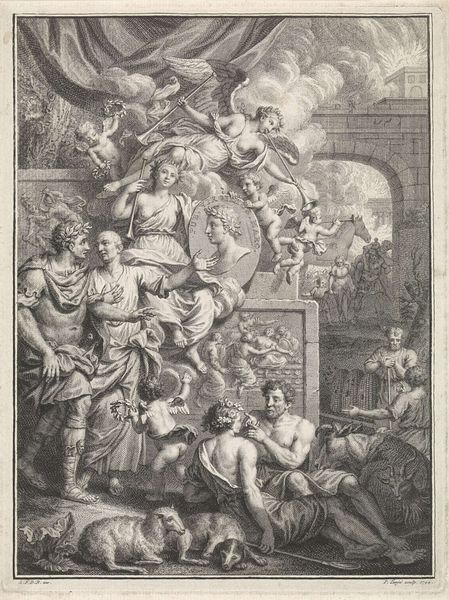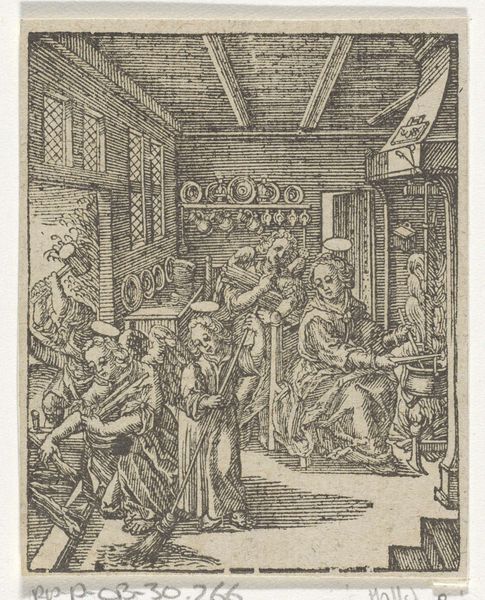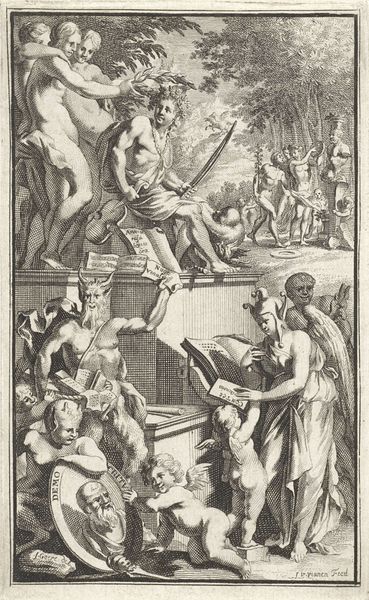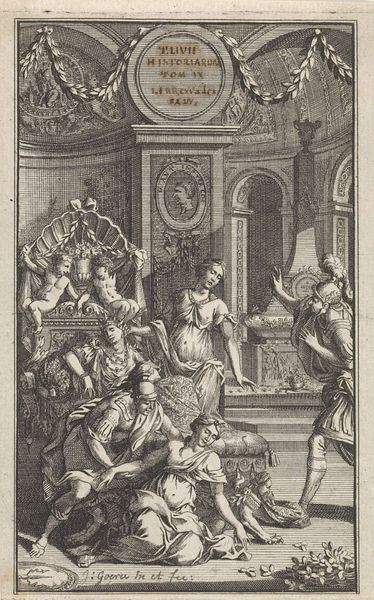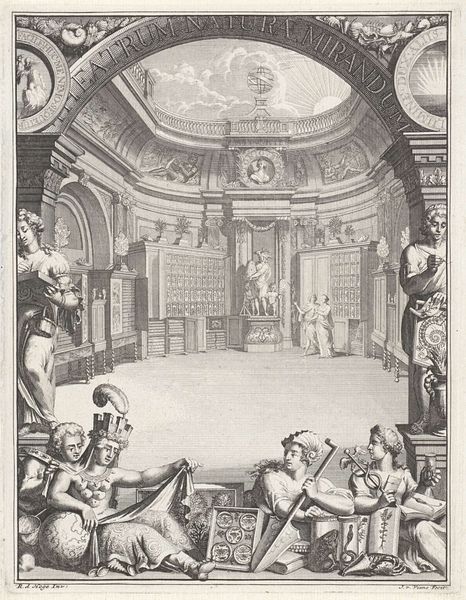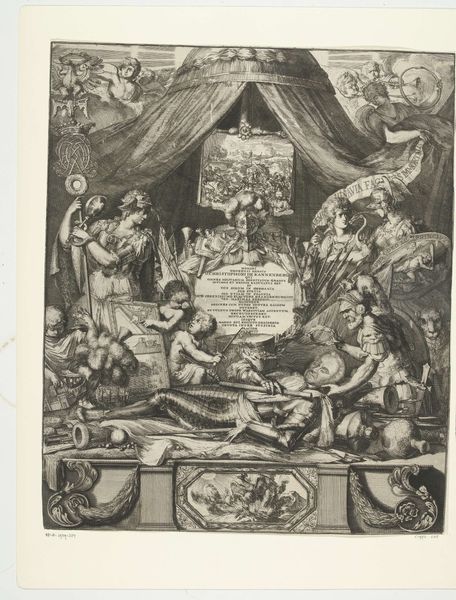
drawing, print, paper, ink, engraving
#
drawing
#
allegory
#
narrative-art
#
baroque
# print
#
old engraving style
#
figuration
#
paper
#
ink
#
line
#
history-painting
#
engraving
Dimensions: height 233 mm, width 145 mm
Copyright: Rijks Museum: Open Domain
Curator: Here, in the Rijksmuseum, we have a fascinating engraving from 1593, "Lazarus bedelt in het huis van de rijke man," or "Lazarus Begging at the House of the Rich Man," by Wierix. Editor: The mood is starkly set, isn’t it? The lines are incredibly fine, almost fragile, and yet they depict this opulent scene with such harsh contrasts between light and shadow. It makes the rich man’s feast feel…menacing. Curator: Absolutely. Wierix, known for his intricate engravings, really captured that era's anxieties about wealth and poverty. The artwork details the parable of Lazarus, highlighting the disparity between the wealthy and the suffering. It uses ink on paper and embodies the Baroque style with its theatrical drama and ornate detail. The composition is crowded, full of visual narratives unfolding simultaneously. Editor: Focusing on the means, the physicality of creating such detail with a burin on a copper plate—it speaks volumes about skilled labor during that period. Think of the time and precision involved! And, looking closer at that table setting – the tableware, the way food is being presented – all shout status, excess and… consumption. Wierix uses this detailed reality to talk about that chasm between material excess and dire need. Curator: Precisely. Note how Lazarus, depicted with such pitiful detail outside, contrasts with the figures inside, seemingly oblivious. The scene within the doorway further deepens the visual commentary, almost like a play within a play, mirroring the unfolding narrative. To me it shows the callousness of indifference to the suffering of others and, perhaps more subtly, hinting at divine judgment. Editor: It’s all about this cycle, isn’t it? The rich indulge while Lazarus suffers, producing not just social disparity, but creating conditions for a much larger imbalance. What about Wierix as an engraver? His role, disseminating the religious narratives, becoming crucial. I find myself more affected by the meticulous craft used here, than the story told. The line between “high art” and printed image gets increasingly blurred in that sense, it democratized storytelling. Curator: I agree. It's both a moral lesson, beautifully rendered. Something to meditate upon about values, perhaps a message delivered to the elites of Wierix's time. Editor: Yes, a lesson crafted for eternity out of base materials and then endlessly reproduced… a potent symbol of its era, wouldn't you say?
Comments
No comments
Be the first to comment and join the conversation on the ultimate creative platform.
